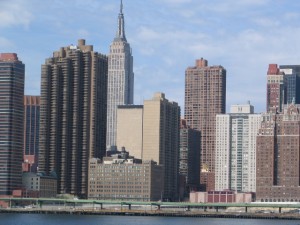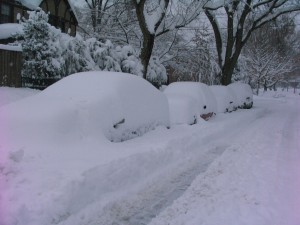I know, you’re thinking what do mushrooms, LEED EB:O&M and ancient vampyres have to do with one another, let alone with greening the planet? After last week’s blog on Architect Barbie and social equity, you should know by now that I can make seemingly unrelated topics weave together seamlessly – at least I think so! For the past few days mushrooms, LEED EB:O&M and a Gothic tale of “love, death and immortality” have taken up a lot of my time and thinking. And it all comes back around to maintaining our lives and places on a planet of great turbulence.
Waking up to Mushrooms
Friday night we had a thunderstorm in Winston-Salem, NC that was so violent our basement flooded for the first time in 30 years AND rain came down our chimneys as well. Several of my newly planted flowers drowned in their new pots and our back porch welcome mat sprouted 2” high mushrooms over night. June and July have felt like August, which makes us fear what August might become. Weather everywhere now seems to only be in extremes. In Washington DC, where I live part time, last year we had the most snow ever in recorded history and the most 100 degree days in one summer. I am convinced like most, that climate change that is mostly man-made, is changing our weather and changing our lives. I am tired of the extremes and the more and more I read and research, I am convinced that the only way to reverse this horror is to take on more responsibility for maintaining our lives and our planet.
Maintaining with LEED
It is well established that the operations of buildings contribute almost 50% of all the greenhouse gas emissions in the United States — and making buildings more energy and resource efficient is one of the most immediate and measurable ways to address this growing concern. Since new and renovated high performing buildings, a growing number of which are LEED certified, comprise less than 10% of the country’s portfolio, it is clear that the biggest and indeed the most important way to improve our impact on the planet is to improve the operations of our existing buildings. Of the more than a dozen LEED rating systems, the only one to specifically address operations and maintenance is LEED EB:O&M (Existing Buildings: Operations & Maintenance). And more and more, historic buildings of all sizes are recognizing that the best way to implement a whole building cyclical maintenance program which improves their efficiency and greens their activities is to adopt LEED EB:O&M.
Using LEED EB:O&M as a maintenance tool allows owners to integrate green strategies into an active program for the ongoing preventative maintenance and refurbishment of historic buildings. LEED EB:O&M’s continuous improvement cycle of “plan, implement, measure, assess” requires that once green strategies are implemented, certification will be based on tracking that performance over time. Performance periods must be continuous (three months to two years) and overlap. Certification under LEED EB:O&M is time sensitive and must be renewed at least every five years. Recertification encourages continuous monitoring and improvement of sustainable practices over time.
Although historic buildings that are receiving LEED certification for their capital renovations receive more press, some of the earliest buildings to certify under LEED EB:O&M have been historic buildings including the National Geographic complex in Washington, DC, the Colorado State Capitol in Denver and now the Empire State Building in New York. The synergies between a preservation cyclical maintenance program and improved environmental goals are encouraging the use of this rating system by all types and sizes of buildings. The first building in the world to achieve a triple LEED Platinum rating – LEED Core & Shell, LEED Commercial Interiors and now LEED EB:O&M is a historic building in Lansing, Michigan, the Christman Building. And now one of the first house museums to set LEED EB:O&M as a goal is the Haas-Lilienthal House in San Francisco, a Queen Anne style “painted lady” designed in 1886 and now operated as a house museum by San Francisco Architectural Heritage.
Using LEED EB:O&M on historic buildings, shows how the greening of the operations of existing and historic buildings, can be a sound cyclical maintenance tool. These key projects mentioned above have used original character defining features and original passive design features to improve the energy efficiency of their buildings, developed strategies for retrofitting their historic features in a sympathetic manner and followed a thought process that was used to determine that LEED EB:O&M must be a goal of their maintenance and operations plans.
For a whole building maintenance program to work and to work over ongoing monitoring periods, the program must be adopted by the owners, designers, occupants and facility managers in a truly holistic manner. LEED EB:O&M is probably the most collaborative of the LEED rating systems proving that by connecting design goals with the goals, needs and actions of the collective users, efficiency and improvements will become a by-product of a well-planned process.
Reusing the building’s original features can lead to a plan for efficient environmental actions that improve long term stewardship; and this plan will show how new technologies and reactivation of original design features can together provide innovations in green building design and debunk the myths that historic buildings cannot readily achieve LEED certification.
And Finally, the “Vampyres”
Saturday evening we went to see “Vampyre” – an original modern ballet performance of John Polidori’s 1816 short story.“The Vampyre”, presented by Terpsicorps, a summer ballet company based in Asheville and Winston-Salem, NC, was brilliant, frightening and glorious, sort of an edgy goth view of a classic story. But it was the conversation after the ballet that tied all of these thoughts together. The artistic director and dancers sat on the stage (the Hanesbrands Theatre in the Milton Rhodes Center for the Arts) in downtown Winston-Salem and entertained questions from the audience. It was a sold-out performance and few people left after the show ended. Many had questions and comments – primarily applauding the company for a stellar performance, amazing new ballet and astounding sets and costumes. Again and again, people asked if this brilliant show would go on the road or be performed by other companies as it should. But sadly we were told that the amount of money needed to maintain a company for more than a week made it impossible with the current budget of a summer troupe, but if anyone would like to write a check for $500,000….
It all comes back around to maintaining what we have. We can build a new skyscraper and have it certified LEED Platinum, but it’s the maintenance of that building over the rest of its lifetime that will make the real impact on the environment. We can develop a fabulous new ballet which reflects classical tales and speaks of today, but what everyone really wants, including its creator, is to provide the stewardship to maintain it in perpetuity. We all love something that’s fresh and new, but we want others to love it also, and that can’t happen if we don’t have a way to keep it going. Whether it’s a building, a ballet or our planet, if we don’t methodically maintain all that’s good and useful and usable, we will continue to wake up with mushrooms in our welcome mat.
And if you’d like to “subscribe” or follow this blog, True Green Cities, please sign up through the “Subscribe” button at the bottom left of this page. You’ll receive a daily recap when new blogs are posted.




